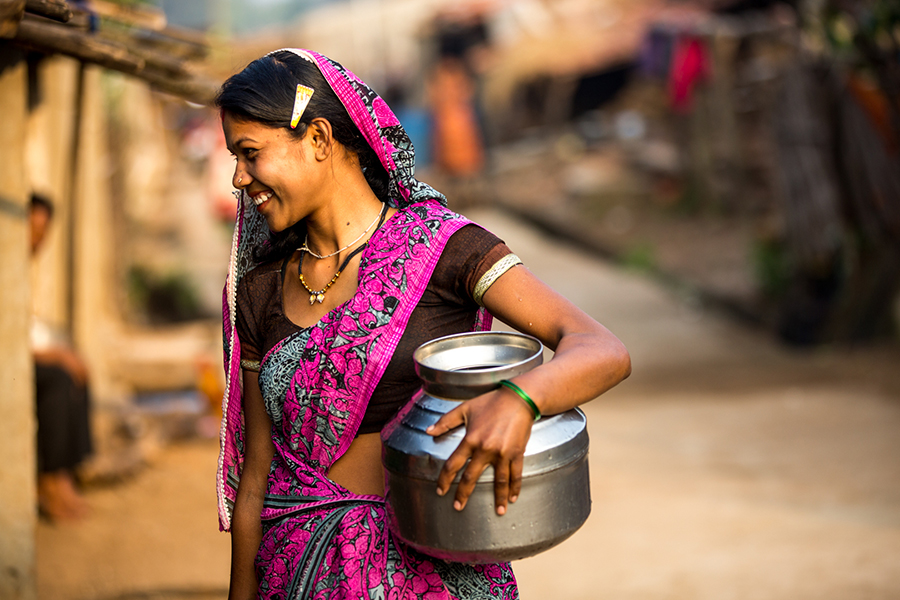 Whenever we talk of water, it is about the role of water in people’s lives, ‘water for people’. However, we tend to forget that in order to ensure water for people, we need to rally ‘people for water’. Unless we the humans are conscious about the ways and means to ensure judicious use of water, it is difficult to ensure sustenance of this life sustaining natural resource. However, before discussing all these let us consider some facts (Source: UNWATER):
Whenever we talk of water, it is about the role of water in people’s lives, ‘water for people’. However, we tend to forget that in order to ensure water for people, we need to rally ‘people for water’. Unless we the humans are conscious about the ways and means to ensure judicious use of water, it is difficult to ensure sustenance of this life sustaining natural resource. However, before discussing all these let us consider some facts (Source: UNWATER):
- 72% of global water withdrawals are used by agriculture, 16% by the local bodies for households and services, and 12% by industries
- 3 billion people live in water-stressed countries, of which 733 million live in high and critically water-stressed countries
- 2 billion people live in agricultural areas with high to very high water shortages or scarcity, of whom 1.2 billion people – roughly one-sixth of the world’s population – live in severely water-constrained agricultural areas
- 42 billion people – including 450 million children – live in areas of high or extremely high water vulnerability
- About 4 billion people, representing nearly two-thirds of the global population, experience severe water scarcity during at least one month of the year
- 700 million people worldwide could be displaced by intense water scarcity by 2030
- Nearly half the global population are already living in potential water scarce areas at least one month per year and this could increase to some 4.8–5.7 billion in 2050. About 73% of the affected people live in Asia (69% by 2050).
Looking at the Indian context, the World Bank estimate points out that 97 million Indians lack access to safe water, second only to China. 21% of the communicable diseases in the country are related to unsafe water. Due to its bludgeoning population, India can afford only 1,000 cubic meters of water per person per year, way below the standard requirement of 1,700 cubic meters per person. The concern for quantity is compounded by the concern for the quality, especially in relation to drinking water. Quality of drinking water is often compromised due to low investment in treatment facilities and lack of maintenance of the supply lines.
Close to 80% of water utilisation in India is for agriculture and here rampant extraction and use of ground water is resulting in steady depletion of the ground water reservoir. The traditional culture of using surface water is forsaken to take advantage of extraction of ground water by using deep, mini-deep or shallow tube wells. The result is clearly written on the wall as the villages face acute water crisis during the extended summer season. While in 1980, India extracted 90 billion cubic meters (bcm) of ground water, in 2010 this reached 251 bcm and this trend is ever increasing.
Combined with the impact of climate change and increasing desertification in the country, the problem has reached such a stage that solutions are difficult to achieve. However, there are certain options to reduce wastage, use surface water as much as possible and go for water efficient as well as climate change resilient agriculture and animal husbandry practices. This calls for investment in people, in increasing awareness, in enhancing skills and in building institutions to explore alternatives. In the field of agriculture, extraction of ground water has to be kept at the minimum and an integrated natural resource management, especially water resources management approach has to be taken. A detailed water budgeting taking into consideration the factors like evapotranspiration, recharge of the water table, run off and thereafter calculation of the demand and supply aspects is the call of the day. While calculating, water requirement for agriculture in the rural areas and water requirement for industries in the areas having industry-clusters will be important. So is the water requirement for drinking and other household purposes.
Budgeting has to go beyond calculation of what is available and what is required. We need to actively consider the options for saving water. Major thrust in the rural areas will be on going for effective utilisation of the surface flow as well as water efficient farming practices. Watershed development to arrest run off, recharge ground water and water harvesting is to be systematically pursued with detailed project reports (DPR) prepared with stakeholder participation. Why the water conservation measures are required, where to construct the water harvesting structures, what kind of structures will suit which type of land in terms of height-slope and location along the run off lines can be properly decided when the scientific knowledge of geomorphology combines with the local wisdom. Decision about water efficient cropping pattern will require people’s participation. All these are possible when the local people are brought together to think, plan and act on water.
In India, the central government, with active participation of the provincial governments, is spearheading ‘Jal Jeevan Mission’, a mission to ensure that all rural households in the country have access to safe and potable pipe water. The mission, no doubt, is laudable. However, this means further depletion of groundwater resources and generation of wastewater at scale, much higher than the existing one in the rural areas of the country. So, when we are planning for the last mile delivery of assured drinking water in the villages, we need to actively facilitate the process of preparation of the ‘village action plan’ where ownership of the processes and the products by the local villagers is the key. Although the primary focus is on providing drinking water to the households and institutions, all the interconnected issues of overall water budgeting, water conservation and harvesting, wastewater management will have to be taken into consideration. All these require development and strengthening of people’s collectives where decisions are taken together and people collectively follow best practices in water efficient development.
Water For People, India in its work in close collaboration with the authorities in the Jal Jeevan Mission and also in its work independent of the government mission, always endeavours to work in close partnership with the community, so that the local community takes ownership of the initiatives and there is close synergy between ‘water for people’ and ‘people for water’ and through community ownership the water woes are proactively addressed.




















































